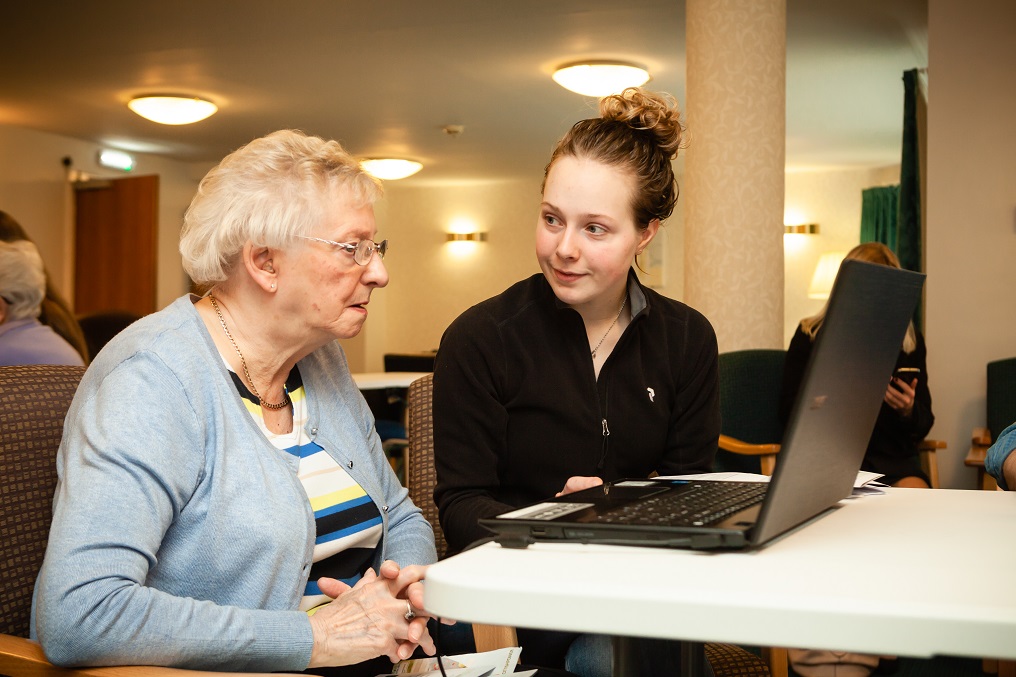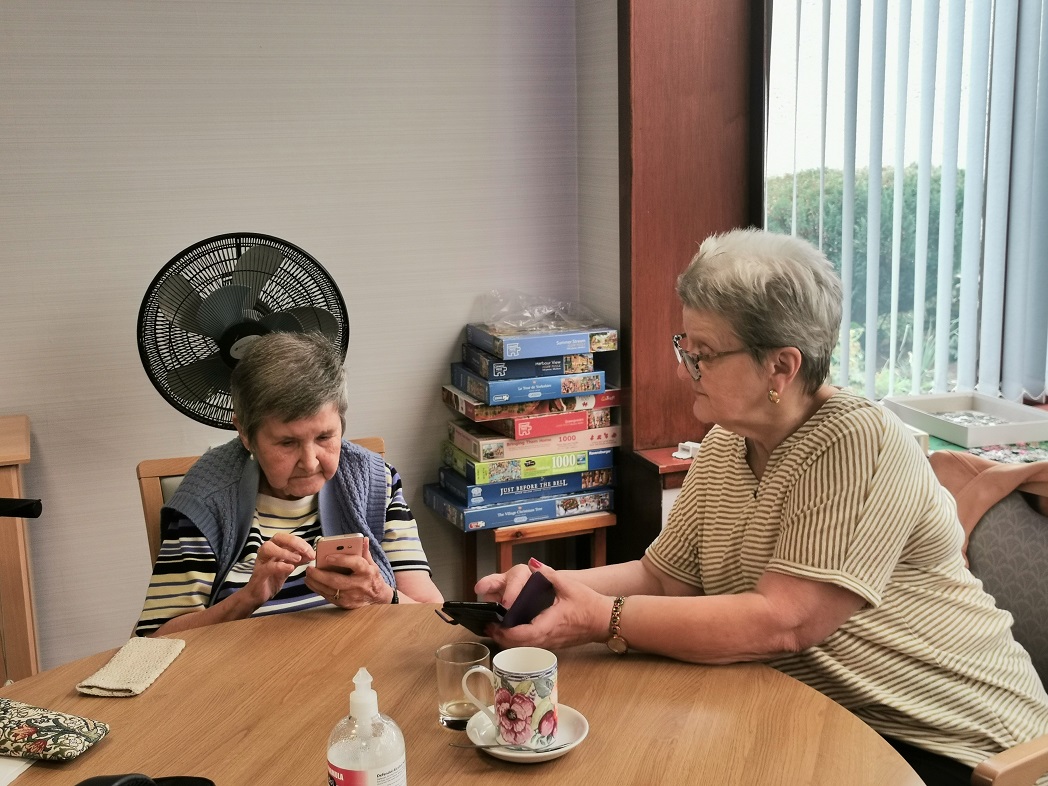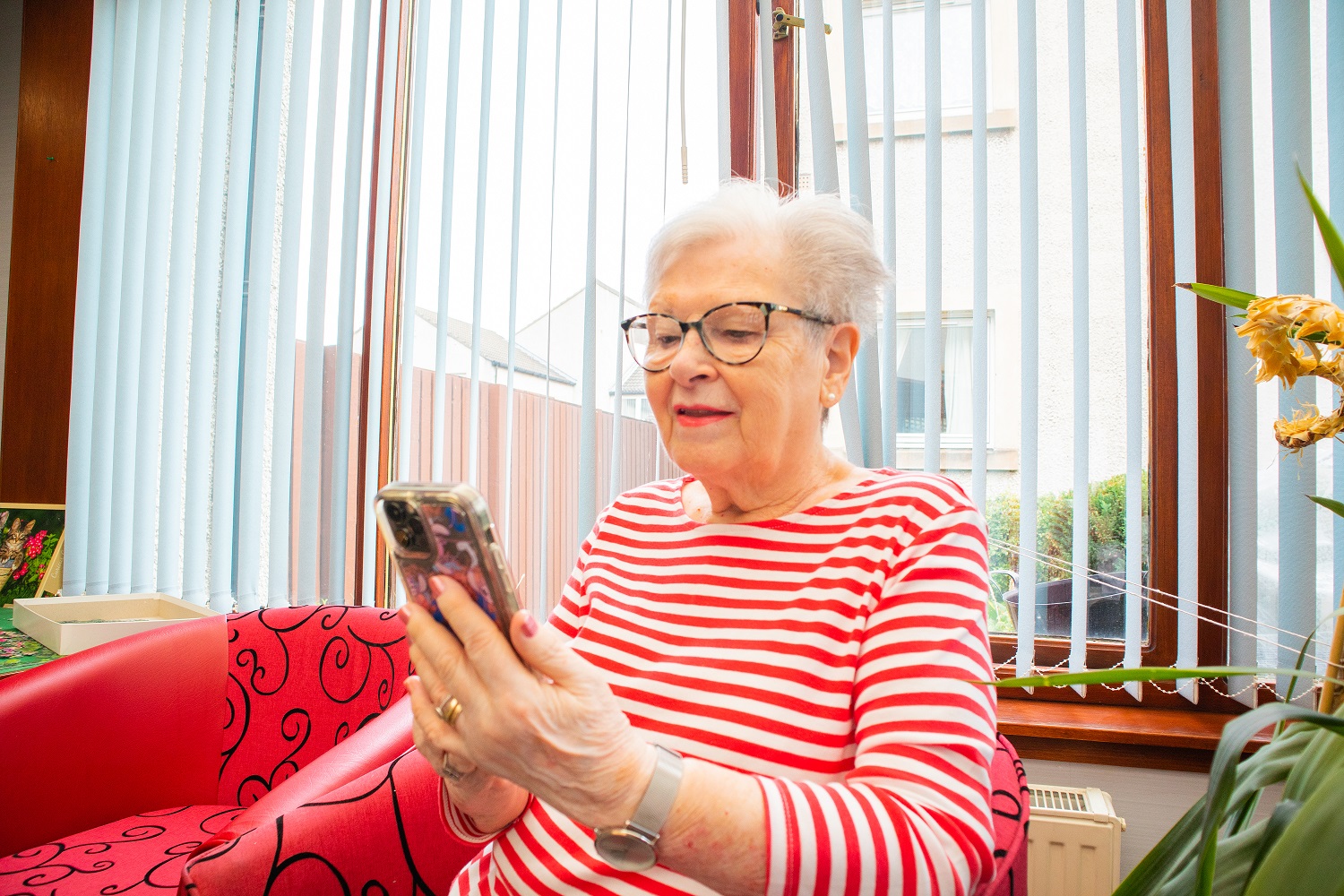Bield receives £75k funding boost to shape digital services

Tenant Ruby McLean and volunteer Fleur Schepen
Bield has been awarded funding that will get older tenants involved in shaping new digital services, enabling them to live as independently as possible.
The housing provider has successfully secured £75k in funding from the pioneering TAPPI project (Technology for our Ageing Population: Panel for Innovation) which aims to improve the way technology is used across the housing and care sector.
The funding will enable Bield to work with tenants to test different devices, apps and systems across a variety of housing settings. Tenants will be given shared responsibility, alongside staff, to co-produce digital services to support their independent living.

The TAPPI project will be led by the Housing Learning and Improvement Network (Housing LIN), the TEC Services Association (TSA) and funded by the Dunhill Medical Trust over a 12–15-month period.
Dr Lynne Douglas, CEO at Bield Housing & Care, said: “We are very excited to be the Scottish testbed for TAPPI. This has huge potential to shift thinking on how housing can be integral to new models of delivery in the integration agenda. Most importantly, it will be delivered together with older people to improve the outcomes that matter to them.”
Bield is one of six providers across the UK, and the only one in Scotland, to be awarded this funding. The other providers are Haringey Council, Platform Housing Group, Pobl Group, Southend Care and Wiltshire Council. Each will receive between £65k - £75k from the total award sum of £440k.

All of the providers will work with researchers from The Cambridge Centre for Housing and Planning Research (CCHPR) – part of the University of Cambridge - to quantify benefits from their work and share what they have learnt with the wider housing and care sector.
Tracey Howatt, director of customer experience at Bield Housing & Care, said: “This important funding will improve the lives of our tenants and enable us to integrate technology throughout our services.
“This will ensure that our customers can live as independently as possible, in homes that have been designed to suit their care and support requirements.”







